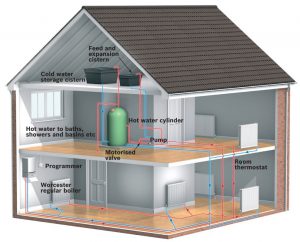Computer simulation and use of CAE/CAD are well-established tools used to understand the critical aspects of energetics (various losses), kinematics (velocities, mach no. etc.) and thermodynamics (pressures, temperatures, enthalpy etc) in thermodynamic cycles and turbomachinery. Computational models are now enabling the design and manufacture of machines that are more economical, have higher efficiency and are more reliable. Accuracy of complex processes that are simulated depends on thermos-physical properties of the working fluid used as input data. The importance of such properties was recognized when it became evident that a steam turbine cycle can have efficiency variance by a few percentage points depending on the chosen set of fluid properties.
Today the thermo-physical properties data is represented in the form of a set of combined theoretical and empirical predictive algorithms that rest on evaluated data. These techniques have been tested and incorporated into interactive computer programs that generate a large variety of properties based upon the specified composition and the appropriate state variables. Equations of state, correlations, or empirical models are used to calculate thermos-physical properties of fluids or mixtures. Examples of this include Helmholtz energy based equations, cubic equation of state, BWR pressure explicit equations, corresponding states models, transport models, vapor pressure correlations, spline interpolations, estimation models or calculation methods for vapor-liquid equilibrium or solubility, and surface tension correlations. Further fitting techniques, and group contribution methods are incorporated. The following broad level properties are often used in simulation tools:




















 Humid climates commonly come with the challenge of moisture standards. When HVAC (heating, ventilations, and air-conditioning) systems do not maintain proper moisture conditions/humidity control, it causes damages and defects to the building.
Humid climates commonly come with the challenge of moisture standards. When HVAC (heating, ventilations, and air-conditioning) systems do not maintain proper moisture conditions/humidity control, it causes damages and defects to the building.